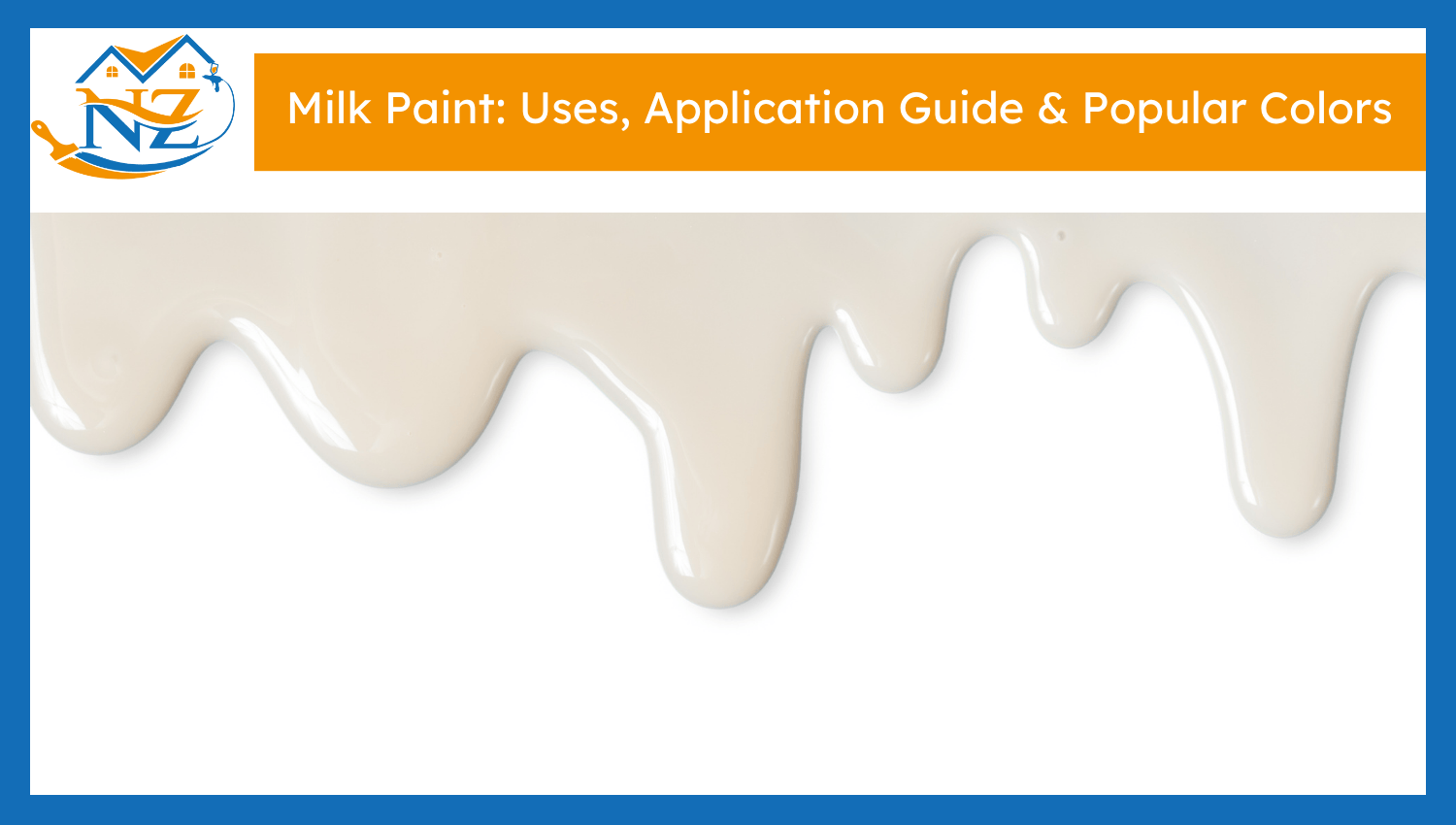

Milk paint is a non-toxic, odorless, and water-based paint with low volatile organic compounds. It is made up of milk protein (casein), lime (calcium carbonate), clay, and natural pigments. Unlike chalk paint, it is sold in a powder form and mixed with water before use. Milk paint is an eco-friendly paint as it does not contain polymer binders, additives, and synthetic products. It was first formulated about 49,000 years ago from bovid milk and ochre mixture in a South African cave. Later, acrylic gained popularity and replaced this paint. Now it is revived for its biodegradable qualities among DIYers and sustainable designers. Unlike latex or acrylic paints, milk paint does not emit strong fumes, making it safer for indoor projects. This matte paint is available in 56 colors, ranging from classic neutrals to bold reds, blues, and greens.
| Property | Description |
|---|---|
| Base | Natural (made from milk protein – casein, lime, clay, and natural pigments) |
| Finish | Matte, powdery finish with a softly textured, antique look |
| Drying Time | Fast drying — usually within 30 minutes to 1 hour |
| Adhesion | Excellent on raw/porous surfaces; may require bonding agent for slick surfaces |
| Coverage | Moderate to high; varies by dilution and surface porosity |
| Ease of Use | Requires mixing from powder; great control once mixed properly |
| Distressability | Easily distressed for vintage, aged, or chippy effects |
| Sealing Required | Yes — needs a topcoat (wax, oil, or polyurethane) for protection and durability |
| Cleanup | Easy — clean with water (no harsh chemicals) |
| Toxicity | Non-tox |
Here are the four common uses of milk paint:
Here is the step-by-step guide to apply milk paint:
Here are the six limitations of milk paint:
Here are the thirteen popular color options for milk paint:
| Color | Visual Appeal | Common Uses |
|---|---|---|
| Federal Blue | Deep, colonial-style navy blue | Antique chairs, farmhouse cabinets |
| Salem Red | Warm, earthy brick red | Rustic cupboards, primitive décor |
| Buttermilk | Soft, creamy off-white | Distressed vintage furniture, light cottage interiors |
| Mustard | Muted, golden yellow | Folk art, country tables and stools |
| Boxwood | Earthy, warm green | Primitive hutches, farmhouse doors |
| Pitch Black | Deep, matte black | Modern rustic finishes, contrast pieces |
| Shutter Gray | Cool gray with a hint of blue | Cabinets, window frames, neutral furniture |
| Driftwood | Soft, weathered brown-gray | Beachy or coastal projects, reclaimed wood looks |
| Arabian Night | Rich midnight navy | Accent tables, dramatic focal pieces |
| Oyster White | Warm, slightly beige white | Neutral base coats, layered effects |
| Ironstone | Cool, crisp antique white | Farmhouse kitchen furniture, layering base |
| Peacock | Vibrant blue-green | Statement furniture, artistic decor |
| Tobacco Brown | Rich, warm chocolate brown | Wooden chests, traditional pieces |
Yes, varnishing is important for water-resistance and durability. It preserves the original earthy pigments and increases the shelf life of paint.
Yes, milk paint is often used on galvanized signs with a primer to reduce rust and corrosion.
Milk paint dries in 30 minutes to 2 hours. Drying time depends on the humidity levels and thickness of the paint. It takes a few days for milk paint to cure completely.
Yes, milk paint is used to paint objects that come into direct contact with food due to its natural composition.